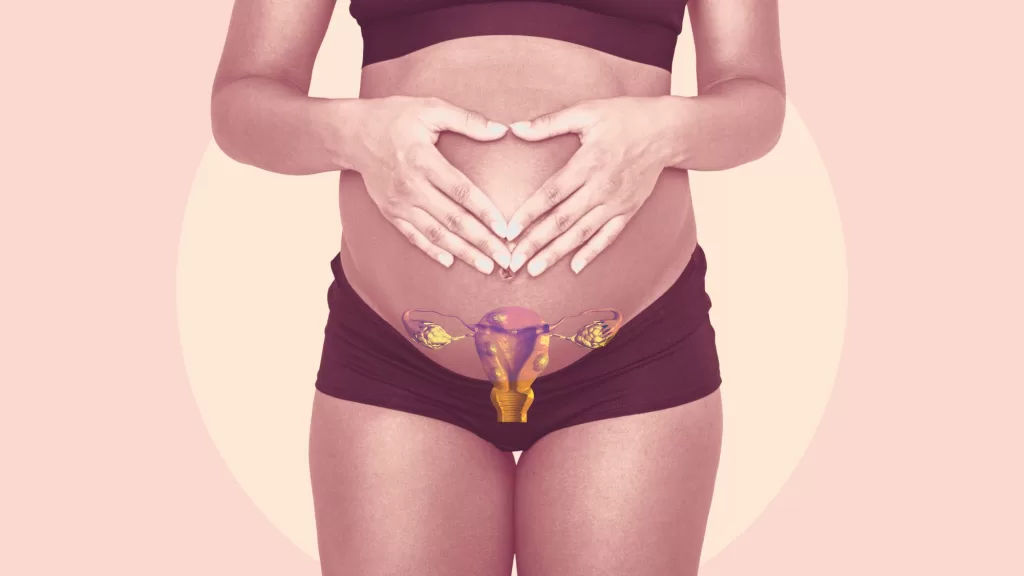Fibroids are non-cancerous or abnormal growths that develop in or around the uterus. They are made up of smooth muscle cells and connective tissues. However, they develop in childbearing women at around 30 and 40 years of age. Also, they vary in size, number, and location. There is no defined cause of fibroids but there is a risk factor that may make one have fibroids. These are;
- Family history.
- Obesity.
- Early onset of puberty.
Types of fibroids
So, the type of fibroid depends on its location in the uterus.
- Submucosal fibroids– These are found on the inside of the uterine spaces (cavity).
- Intramural– They are embedded into the walls of the uterus.
- Subserosal– Found outside the wall of the uterus.
- Pedunculated- They grow outside the uterus wall but are connected to the uterus with a thin stem (mushroom-like).
Signs
So, the signs and symptoms of the illness are;
- Heavy and painful periods.
- Lower back pain.
- Pain and discomfort during sex.
- May cause infertility.
- Frequent urge to urinate
Diagnosis

- Ulta sonography (ultrasound) – uses sound waves. Commonly used where an ultrasound probe is placed on the abdomen and scans the ovaries plus the uterus.
- Magnetic resonance imaging (MRI) uses magnets and radio waves to show the fibroids’ size, number, and location. It helps to confirm the diagnosis and determine which is the best treatment.
- Computed tomography ( CT) – uses X-ray images to make a detailed image of the internal organs from several angles.
- Hysteroscopy – A thin instrument with a camera and a light passed through the vagina up to the uterus. Doctors use it to assess fibroids.
- Laparoscopy – an incision is made near the navel and a laparoscope is inserted into the pelvis. It has a bright light and a camera that helps the doctor to view the uterus and determine the best treatment.
Treatment.
So, treatment depends on a number of things;
- The number of fibroids.
- The size.
- Location.
- symptoms experienced.
- The desire for children.
- Other health conditions are present.
- Any previous fibroids treatment.
Medication.
- Use of over-the-counter pain medication. It helps to manage discomfort and pain.
2. Iron supplements- in case one has excessive bleeding. Prevents anemia.
3. Birth control – help in regulating heavy menses.
- Ed Sheeran bio-age, education, marriage, career, net worth, songs.
- David Robinett Bio, Wiki, KTAB News, Age, Education, Family, Children, Wife, Net Worth, and Career
- Raquel Martin Bio, Wiki, DC Now News, Age, Education, Family, Children, Husband, Net Worth, and Career
- Dani Sinha Bio, Wiki, BBC London, Age, Education, Height, Family, Husband, Children, and Career
- Goran Erickson age, origin, wife, children, cancer, career, net worth .
- Alice Wahome Bio, Age, education, family and net worth.
- Julianne Moore age, husband, children, movies, books, net worth.
4. Gonadotropin-releasing hormone – makes them shrink.
Surgery removes medium to large fibroids, especially if they bring health complications.
Palliative care – monitoring the growth of the fibroids before taking any action.
- What is the history of Kenyatta University?
- Kenya Institute of special education, courses.
- List of Accredited Private Universities in Kenya
- List of Best private secondary schools in Nairobi County.
- The best private primary schools in Nyeri county.
- Kenya Medical Training College, courses, requirements.
- Public Universities in Kenya